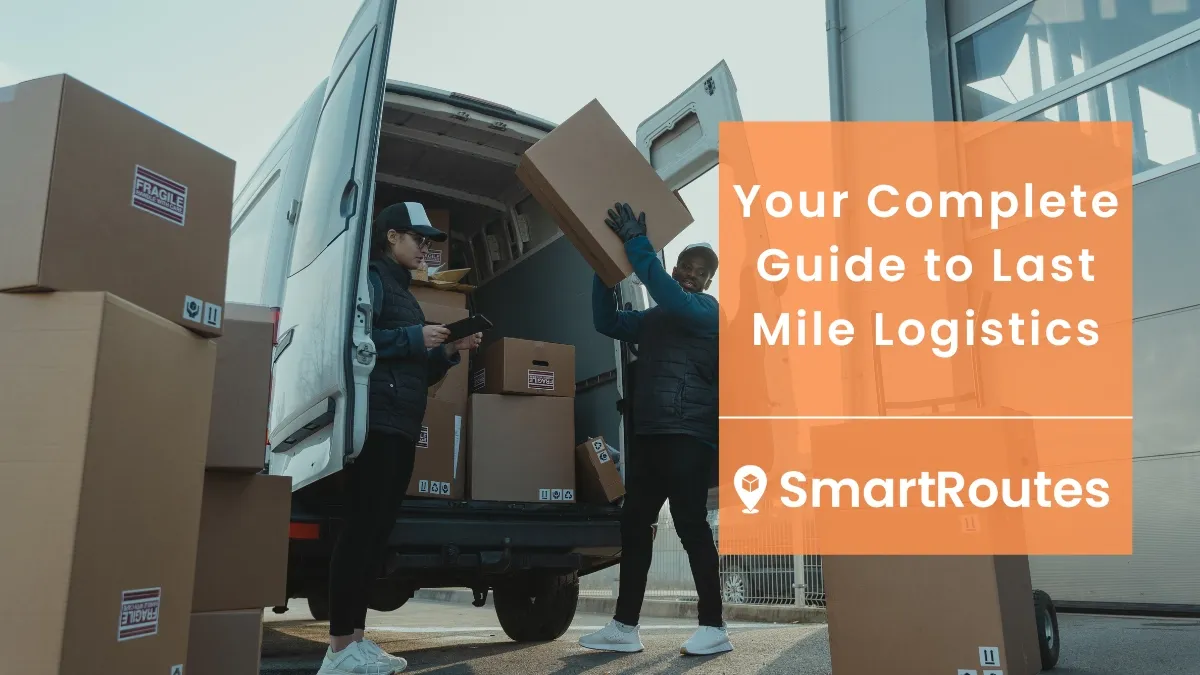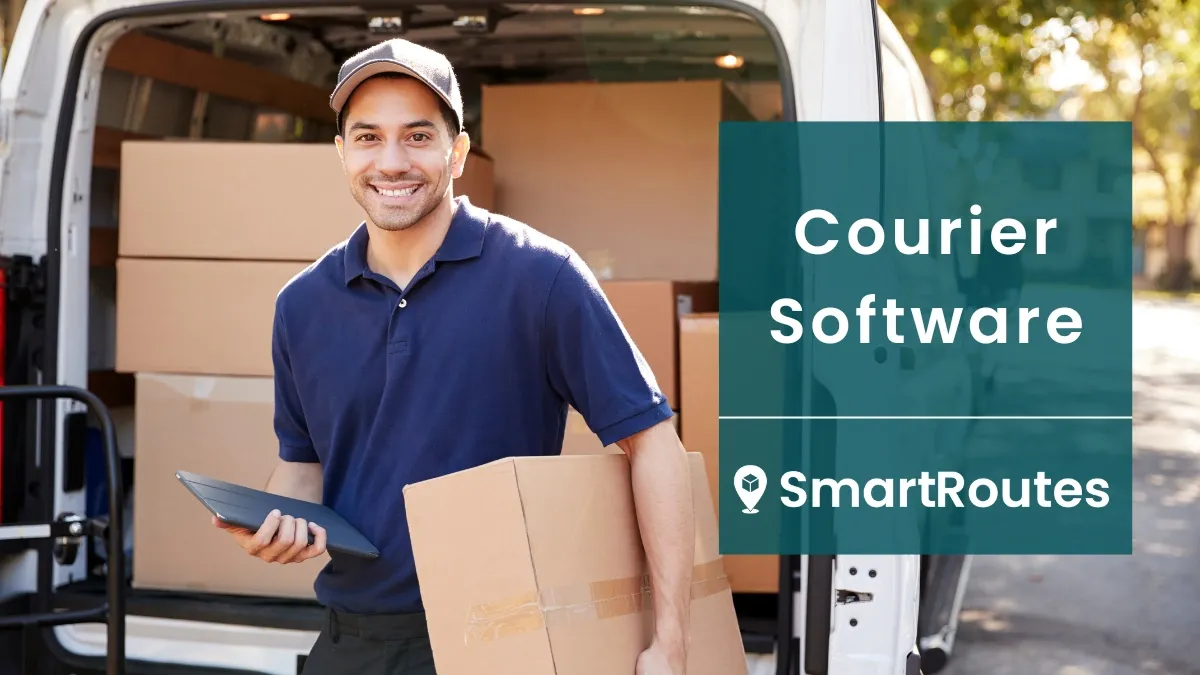How to Start a Delivery Service: The Ultimate Guide
Discover how to start a delivery service with our comprehensive guide. From planning and licenses to delivery management, we cover it all!
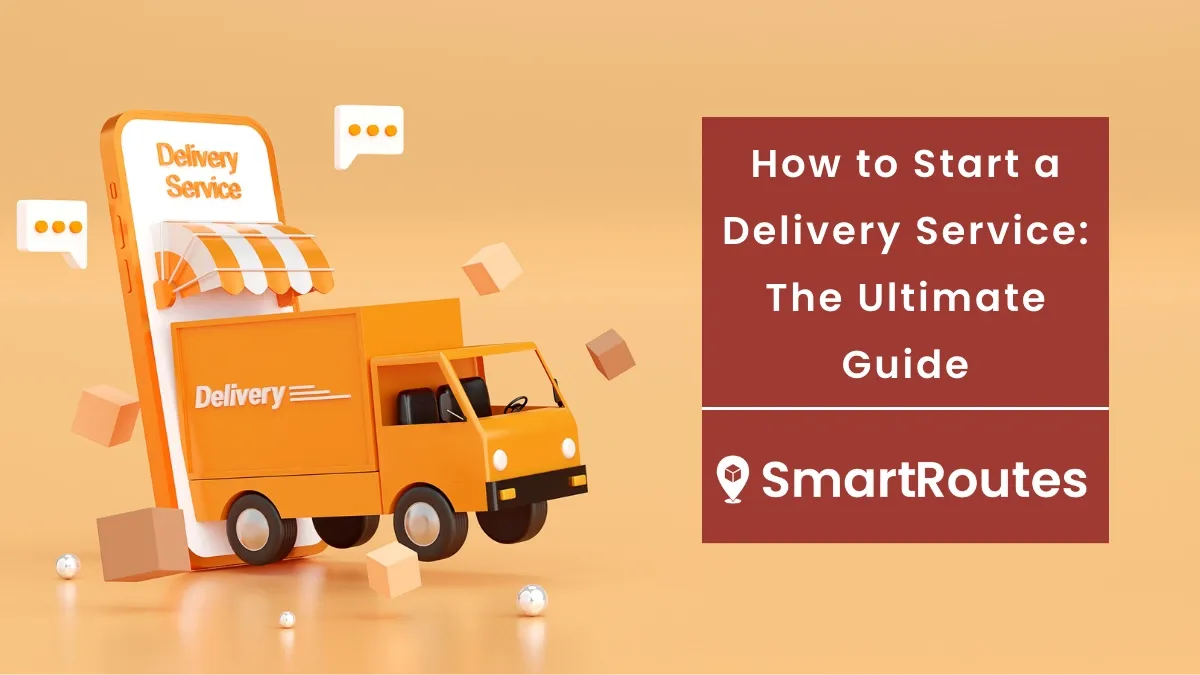
The demand for convenient, reliable delivery options is constantly growing alongside the exponential growth of eCommerce. As more consumers embrace online shopping for its convenience and accessibility, the expectation for seamless delivery experiences has never been higher. This surge in demand isn't just about getting products from point A to point B; it's about providing a service that enhances the overall customer experience, ensuring packages arrive on time and in perfect condition. Effective delivery management plays a crucial role in meeting these expectations and optimizing operational efficiency.
In this blog, we delve into the essential steps and strategies for aspiring entrepreneurs looking to capitalize on this thriving market. Whether you're considering starting a local courier service, launching a specialized delivery business, or expanding an existing operation, we provide a comprehensive guide to help you navigate the complexities of setting up and running a successful delivery service. Let’s get started!
Why Start a Delivery Business?
How to Start a Delivery Service in 9 Steps
Why Start a Delivery Business?
Here are some compelling reasons to consider launching your own delivery business:
- Rising Demand: The demand for home delivery services continues to escalate, driven by busy lifestyles and the surge in online shopping. As more businesses and individuals seek efficient delivery solutions, there's ample room for new players to enter and thrive in the market.
- Expanding eCommerce Market: With the rapid expansion of online retail, businesses across various sectors are embracing digital platforms. This shift amplifies the need for robust delivery services to ensure products reach customers promptly and in pristine condition.
- Flexibility and Scalability: A delivery business offers flexibility in operations and scalability potential. Starting small and gradually expanding allows you to adjust to market demands and refine your service offerings. Advances in technology, such as route optimization software and delivery management systems, streamline operations and support growth.
- Diverse Revenue Streams: Delivery services can cater to a wide range of industries and products, from groceries and pharmaceuticals to furniture and electronics. Diversifying your service portfolio enables you to tap into multiple revenue streams and adapt to evolving consumer preferences.
SmartRoutes Route Planning Software
Streamline your entire delivery process, all from one platform

Types of Delivery Services
- Logistics and Courier Services: Catering to the needs of businesses requiring timely and secure transportation of documents, packages, and goods across local or regional areas.
- Grocery and Food Delivery: Serving busy consumers who seek convenience in having fresh produce and prepared meals delivered to their doorstep.
- Pharmacy and Medical Supplies: Ensuring critical medications and medical equipment reach patients and healthcare providers swiftly and securely.
- Furniture and Electronics: Handling the logistics of large, bulky items, ensuring safe delivery and assembly services for home and office furnishings, as well as electronic devices.
- Wholesale Deliveries: Facilitating the bulk transportation of goods from manufacturers or distributors to retailers or businesses, optimizing supply chain efficiency.
- eCommerce and Local Delivery: Supporting online retailers by providing efficient last-mile delivery solutions to local customers, enhancing customer satisfaction and loyalty.
Whether you're launching a delivery service on behalf of other companies or embarking on delivering your own products, SmartRoutes is here to support your journey.
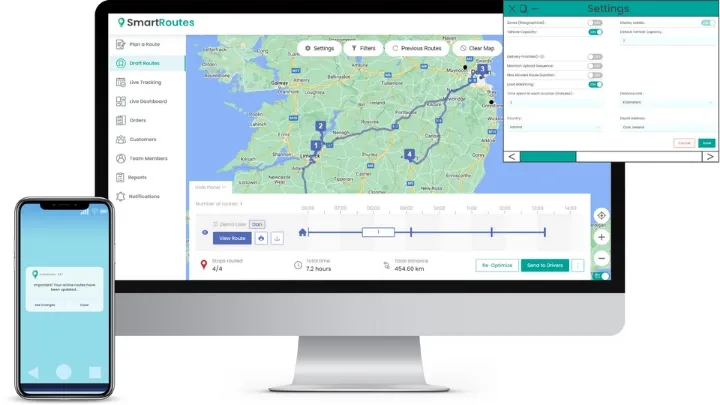
At SmartRoutes, we've assisted numerous small and medium-sized businesses in establishing their delivery services for various reasons:
- They had grown to a point where outsourcing delivery had become too expensive
- They had experienced issues with breakages and damaged goods as a result of a third-party courier's lack of care and attention.
- They had grown to a point where they felt that they needed to take full control of the delivery experience to protect their brand reputation
On the other hand, we have also helped people to completely change careers and start a courier business, completely pivoting from other jobs and industries.
Through our diverse client base, we've gained valuable insights into the unique challenges that new delivery business owners encounter. We consider it a privilege to be part of their founding journey.
This experience has equipped us with practical knowledge of the dos and don'ts in starting a delivery business. With this in mind, we've crafted a comprehensive step-by-step guide below to help you navigate this exciting venture.
How to Start a Delivery Service in 9 Steps
Starting a delivery business involves a structured process that lays the groundwork for success, tailored to your specific goals and market niche. While each venture is unique, following these steps will provide a solid foundation for launching your delivery service:
Step 1: Choose Your Niche
It's not just about what you deliver but also how you deliver it.
Many new delivery business owners often underestimate the importance of narrowing their focus, mistakenly believing they can cater to every possible market segment.
By defining your niche early on, you set clear parameters for your service offerings and operational requirements. For example, opting to specialize in food delivery would necessitate investing in a refrigerated fleet to maintain freshness and safety standards. On the other hand, offering a personalized two-person delivery service requires ensuring you have enough trained staff to handle deliveries efficiently and provide excellent customer service.
Understanding your niche allows you to tailor your business strategy to meet specific customer needs effectively. It enables you to allocate resources wisely, optimize logistical processes, and build a strong brand identity that resonates with your target audience.
Step 2: Write Your Business Plan
Once you have identified the type of delivery business you intend to start, the next critical step is to develop a comprehensive business plan. This foundational document serves as a roadmap that outlines your business objectives, strategies, and operational guidelines.
- Determine Your Target Audience: Begin by clearly defining your target market. Understand the demographics, behaviors, and needs of your potential customers. Are you targeting busy professionals needing fast grocery deliveries or perhaps businesses requiring reliable courier services?
- Conduct Market Research: Thorough market research is essential to validate your business idea. Analyze industry trends, competitor strengths and weaknesses, and customer preferences. Gather insights that will inform your pricing strategy, service differentiation, and marketing tactics.
- Define Company Details: Outline essential details about your company, including its name, mission statement, and a brief description of your delivery services. Define your unique value proposition—what sets your delivery service apart from competitors? Establish clear pricing structures that align with market standards while ensuring profitability.
- Create a Timeline for Launch: Develop a timeline that outlines key milestones leading up to your business launch. A well-defined timeline keeps you on track and accountable, ensuring a smooth and timely launch.
Step 3: Calculate Your Startup Costs
Accurately calculating your startup costs is crucial for determining your funding needs and creating a realistic budget. Here are key expenses to consider:
- Administration Fees: Initial costs associated with setting up your business, including legal fees, incorporation fees, and other administrative expenses.
- Business Licenses and Permits: The cost of obtaining the necessary licenses and permits required to legally operate your delivery business in your area.
- Staff: Salaries, wages, and benefits for any employees you need to hire initially, including drivers, administrative staff, and any other essential personnel.
- Market Research Expenses: Funds allocated for conducting thorough market research to understand your target audience, competition, and market demand.
- Equipment: Purchasing delivery vehicles, GPS systems, loading equipment, and any other tools necessary for your operations.
- Technology: Investing in delivery management software, route optimization tools, and other technological solutions to streamline your operations.
- Marketing and Advertising: Budget for promoting your business, including website creation, digital marketing campaigns, print advertising and so on.
- Insurance: Securing appropriate insurance coverage for your business, including liability insurance, vehicle insurance, and workers' compensation insurance.
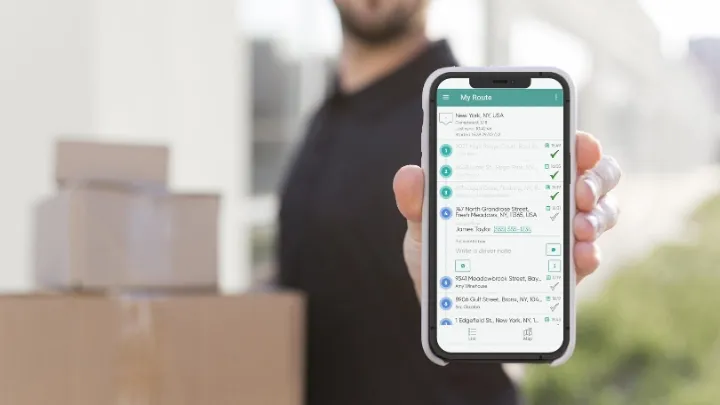
Step 4: Choose Your Business Structure and Register Your Business
Selecting the appropriate business structure is a crucial decision that affects your legal obligations, tax liabilities, and personal liability. Here are the primary business structure options to consider:
Sole Proprietorship:
A simple and common structure where one individual owns and operates the business. The owner is personally liable for all business debts and obligations, and profits are reported on the owner’s personal tax return.
Partnership:
A business owned by two or more individuals. Partnerships can be general or limited, with partners sharing profits, losses, and liabilities. Each partner’s share of income is reported on their personal tax returns.
Corporation:
A more complex structure that is a separate legal entity from its owners. Corporations provide limited liability protection, meaning owners are not personally liable for business debts. Profits are taxed at the corporate level and again as dividends to shareholders, leading to potential double taxation.
Limited Liability Company (LLC):
A flexible structure combining elements of partnerships and corporations. LLCs offer limited liability protection to owners while allowing profits to be taxed either at the business level or passed through to owners' personal tax returns, avoiding double taxation.
After choosing the appropriate business structure, register your business with the relevant authorities, obtain necessary insurance policies, and set up a dedicated business bank account to manage finances and ensure legal compliance.
Step 5: Get the Required Licences and Permits
Obtaining the necessary licenses and permits is essential to legally operate your delivery business. The specific requirements will vary depending on your location and the type of delivery services you plan to offer. Start by investigating the licensing requirements specific to your city, county, and state. This may include general business licenses as well as permits for operating commercial vehicles.
If your delivery business involves specialized services, such as transporting food, pharmaceuticals, or hazardous materials, you may need additional licenses or certifications. For example, food delivery services might require health department permits, while medical deliveries could necessitate compliance with health and safety regulations. Additionally, depending on the size and type of vehicles used, your drivers might need to obtain commercial driver’s licenses (CDLs).
Step 6: Establish Your Delivery Area
First, determine the geographical scope of your delivery service. Decide whether you want to serve a local neighborhood, an entire city, multiple cities, or even an entire region. The larger the area, the more complex your logistics will be, and the higher your operational costs.
Consider the population density of your delivery area. High-density urban areas may offer more delivery opportunities and shorter travel distances between stops, potentially reducing fuel and labor costs. However, they may also present challenges such as traffic congestion and limited parking. Conversely, low-density rural or suburban areas might involve longer travel distances and higher fuel costs but could offer less competition and easier parking.
Evaluate your driver capacity to ensure that you can meet demand within your chosen area. The further your drivers have to travel, the higher the cost per delivery. Balancing delivery volume with travel distance is crucial for maintaining profitability.
Step 7: Purchase Equipment, Vehicles and Hire Team
Securing the right equipment, vehicles, and team members is a crucial step in establishing a successful delivery service.
The type of vehicle you need will depend on several key factors:
- Type of Goods: Determine whether you need standard delivery vans, refrigerated trucks for perishable items, or specialized vehicles for oversized goods.
- Size of Goods: Larger items like furniture or appliances will require more spacious vehicles, while smaller packages might only need compact vans or motorcycles.
- Volume of Goods: High-volume deliveries might necessitate larger or multiple vehicles to handle the load efficiently.
- Travel Distance: Long-distance deliveries will require vehicles with better fuel efficiency and comfort for drivers to minimize costs and ensure timely deliveries.
Apart from vehicles, you’ll need various equipment to support your operations:
- Loading Equipment: Trolleys, pallet jacks, and lift gates for easy loading and unloading of goods.
- Safety Gear: Helmets, gloves, and high-visibility vests for drivers and loaders.
- Storage Solutions: Shelving and bins for organizing goods in your warehouse or storage facility.
- Technology: Computers, printers, and mobile devices for managing orders, tracking deliveries, and communicating with drivers.
Building a professional and reliable team is essential as they represent your company to customers. The key roles you'll need to fill include:
- Delivery Drivers: Hire drivers with clean driving records, good communication skills, and a professional demeanor. They should be familiar with the delivery area and capable of handling the physical demands of the job.
- Warehouse Staff: Employ individuals for sorting, loading, and organizing goods efficiently. They should be detail-oriented and able to work in a fast-paced environment.
- Customer Service Representatives: These team members will handle customer inquiries, complaints, and order tracking. Excellent communication skills and a customer-centric approach are crucial. [Checkout our guide: 8 Strategies to Manage Customer Delivery Expectations].
- Dispatchers: Responsible for coordinating deliveries, managing schedules, and communicating with drivers to ensure timely and accurate deliveries.
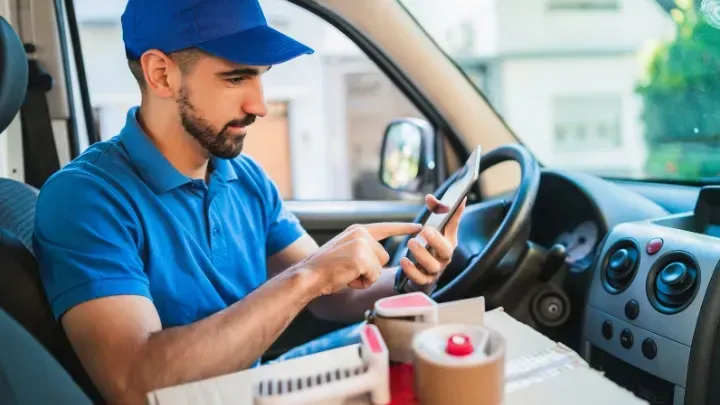
Step 8: Build Your Client Base
Building a solid client base is essential for the success of your delivery service. Here’s how to effectively grow your clientele:
- Utilize Your Network: Leverage existing connections to spread awareness about your services. Word-of-mouth referrals are crucial in the delivery industry, where trust and reliability are key factors.
- Focus on Customer Experience: Prioritize delivering exceptional service to generate positive reviews and enhance your reputation. Happy customers are more likely to recommend your services to others.
- Proactive Outreach: Cold-call businesses within your target geographic area to introduce your services. Highlight your reliability, timeliness, and personalized customer care to attract potential clients.
- Marketing Initiatives: Invest in targeted marketing strategies such as digital advertising, social media campaigns, and local community events. Showcase your service offerings and customer testimonials to increase visibility.
By combining these strategies with a commitment to excellent service, you can steadily expand your client base and establish a strong presence in the competitive delivery market.

Step 9: Equip Your Business with Delivery Software
Ensuring efficient, professional, and cost-effective deliveries is crucial for your business's success. Delivery management software plays a pivotal role in achieving this goal by revolutionizing how deliveries are handled. Here’s how:
- Route Planning: Automate route planning to save time and reduce administrative burden. Input delivery addresses via CSV/Excel or API integration with platforms like Shopify or WooCommerce for streamlined operations.
- Route Optimization: Utilize computational algorithms to determine the most efficient delivery routes, ensuring prompt service to every destination on your list.
- Driver Delivery App: Sync with your delivery management system to capture essential details such as addresses, customer contacts, and delivery instructions. Built-in GPS and navigation features aid drivers in navigating routes effectively.
- Proof of Delivery: Mitigate disputes and enhance customer trust with proof of delivery apps. Drivers can capture photo and signature confirmations directly on their app, which are instantly transmitted to your system, providing transparent updates on delivery status.
By integrating these software solutions, your delivery service can operate smoothly, meet customer expectations consistently, and pave the way for sustained growth in the competitive delivery industry.
Start Your Delivery Service Right with SmartRoutes
Starting a delivery service is a challenging yet rewarding endeavor. If you’ve read this guide, you likely possess the determination required to embark on your journey.
Implementing a robust delivery management system right from the start can significantly elevate your service's professionalism and streamline future growth efforts.
We recommend exploring delivery management software to discover which features best suit your needs. Consider trying out SmartRoutes with a complimentary 7-day trial to experience how it can optimize your operations and enhance customer satisfaction.
Frequently asked questions
1. Are delivery businesses profitable?
Yes, delivery businesses can be highly profitable, especially with the increasing demand for efficient and reliable delivery services. Profitability depends on factors like niche selection, operational efficiency, and market demand. By leveraging technology and optimizing routes, you can significantly increase your margins.
2. How much does it cost to start a delivery business?
The cost to start a delivery business varies widely based on the scale and type of services offered. Initial expenses can range from a few thousand to tens of thousands of dollars. Key cost components include purchasing vehicles, obtaining licenses and permits, insurance, marketing, and investing in technology such as delivery management software.
3. What do you need to start a delivery service?
To start a delivery service, you will need the following essentials:
- A reliable delivery vehicle/fleet: Ensures timely and safe delivery of goods.
- Delivery drivers: Dependable staff to carry out deliveries.
- Equipment for moving heavy items: Necessary for handling bulky deliveries.
- Commercial auto insurance coverage for your vehicle(s): Protects your business from liabilities.
- Navigation software: Optimizes routes and improves delivery efficiency.
- A smartphone: Essential for communication and navigation.
- Packing materials: Keeps items secure during transit.
- Marketing materials (website, email address, business cards, etc.): Helps in promoting your business.
- Business permits for your area: Ensures compliance with local regulations.
4. Can my delivery service compete with the likes of Amazon?
While competing directly with giants like Amazon can be challenging, there are several ways to carve out a niche and succeed. Focus on providing exceptional customer service, offering specialized delivery options, and ensuring fast and reliable deliveries. Local businesses often value personalized service and quicker turnaround times that larger companies might not be able to provide. Leveraging these strengths can help your delivery service thrive in the market.
If you enjoyed this blog, you may also be interested in:
